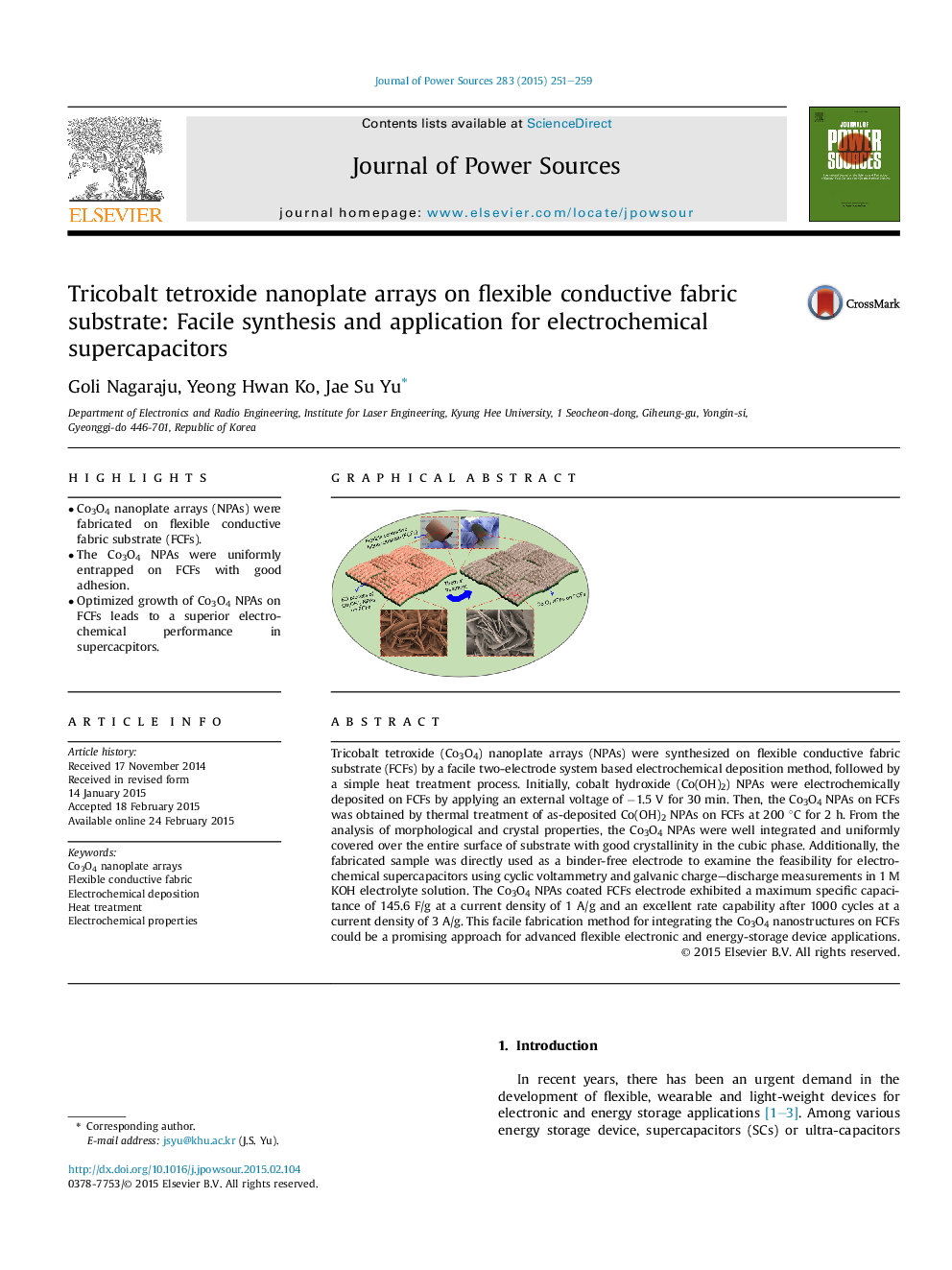| Article ID | Journal | Published Year | Pages | File Type |
|---|---|---|---|---|
| 1292875 | Journal of Power Sources | 2015 | 9 Pages |
•Co3O4 nanoplate arrays (NPAs) were fabricated on flexible conductive fabric substrate (FCFs).•The Co3O4 NPAs were uniformly entrapped on FCFs with good adhesion.•Optimized growth of Co3O4 NPAs on FCFs leads to a superior electrochemical performance in supercacpitors.
Tricobalt tetroxide (Co3O4) nanoplate arrays (NPAs) were synthesized on flexible conductive fabric substrate (FCFs) by a facile two-electrode system based electrochemical deposition method, followed by a simple heat treatment process. Initially, cobalt hydroxide (Co(OH)2) NPAs were electrochemically deposited on FCFs by applying an external voltage of −1.5 V for 30 min. Then, the Co3O4 NPAs on FCFs was obtained by thermal treatment of as-deposited Co(OH)2 NPAs on FCFs at 200 °C for 2 h. From the analysis of morphological and crystal properties, the Co3O4 NPAs were well integrated and uniformly covered over the entire surface of substrate with good crystallinity in the cubic phase. Additionally, the fabricated sample was directly used as a binder-free electrode to examine the feasibility for electrochemical supercapacitors using cyclic voltammetry and galvanic charge–discharge measurements in 1 M KOH electrolyte solution. The Co3O4 NPAs coated FCFs electrode exhibited a maximum specific capacitance of 145.6 F/g at a current density of 1 A/g and an excellent rate capability after 1000 cycles at a current density of 3 A/g. This facile fabrication method for integrating the Co3O4 nanostructures on FCFs could be a promising approach for advanced flexible electronic and energy-storage device applications.
Graphical abstractFigure optionsDownload full-size imageDownload as PowerPoint slide
